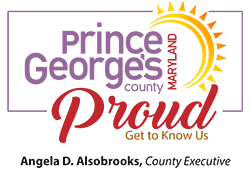
Clean Water Act
In 2010, the federal government required states to meet new standards under the Clean Water Act to address stormwater runoff pollution from impervious areas such as rooftops, sidewalks, driveways, roadways, and parking lots. To meet this mandate, Maryland’s governor signed into law House Bill 987 (PDF) requiring nine Maryland counties and the City of Baltimore to collect a fee from property owners to implement a program to help clean up stormwater runoff pollution from impervious areas.
Local Watershed Protection & Restoration Fund
In 2013, in response to this mandate, the Prince George’s County Council passed 2 pieces of legislation. The 1st bill, CB-45-2013, establishes a Clean Water Program, as required by state law; and provides for the setting, collection, and deposit of a Clean Water Act Fee into a local fund. This fund, the Local Watershed Protection and Restoration Fund, will be used for the following purposes:
- Capital improvements for stormwater management, including stream and wetland restoration projects
- Operation and maintenance of stormwater management facilities and systems
- Public education and outreach relating to stormwater management or stream and wetland restoration
- Stormwater management planning
- Review of stormwater management plans and permit applications for new development
- Grants to nonprofit organizations for up to 100% of a project’s cost for watershed restoration and rehabilitation projects
- Reasonable costs necessary to administer the Local Watershed Protection and Restoration Fund
Fees
The 2nd piece of legislation (CR-59-2013) establishes a schedule of fees to be collected in order to fund the Clean Water Program. The County has developed regulations that establish procedures for determining the Clean Water Act Fee charge to properties, and the criteria by which certain properties may qualify for financial hardship, fee appeals, fee reduction credits, and alternative compliance. This fee will be paid annually by property owners through their property tax bill.
What Is Stormwater Runoff Pollution?
Every day, trash, oil, sediment, chemicals, bacteria, and other pollutants collect on our rooftops, roads, parking lots, and driveways. When it rains, the pollutants travel over these surfaces, flow into the storm drain system, and in great volume end up in our creeks, rivers, lakes, and streams. Below are some common sources and concerns for each type of pollutant.
Pollutant
Sediment
- Common Sources
- Construction sites
- Bare spots in lawn or garden
- Wastewater from washing cars and boats on driveways or in parking lots
- Unprotected and eroding stream banks
- Reasons for Concern
- Loss or destruction of habitat for fish and plants
- Potential navigation hindrances
Pathogens
- Common Sources
- Animal and pet waste
- Malfunctioning septic systems
- Sewer overflows
- Reasons for Concern:
- Closure of shellfish beds and beaches
- Serious risk to human health
Nutrients
- Common Sources
- Animal or pet waste
- Grass clippings and leaves left on streets and sidewalks
- Leaves burned in ditches
- Overused or spilled fertilizers
- Reasons for Concern
- Increased potential for nuisance or toxic algae blooms
- Lower levels of dissolved oxygen
Toxic Contaminants
- Common Sources
- Car and truck exhaust
- Gas spills
- Improperly applied pesticides
- Metallic debris from brake pads
- Oil leaks
- Reasons for Concern
- Serious risk to aquatic life
Debris/Litter
- Common Sources
- 6-pack rings
- Bottles
- Cans
- Cigarette butts
- Fishing line
- Improperly discarded plastic
- Paper
- Plastic bags
- Styrofoam
- Wrappers, etc.
- Reasons for Concern
- Expensive to clean up properly
- Potential risk to human health and aquatic life
- Unpleasant to see along the side of a road or the bank of a river
